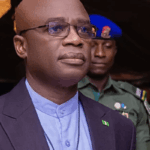In 1978, during Apple's initial product launches, a young engineer challenged Steve Jobs over a major design flaw in the Apple II. Jobs, who was famously sharp and often dismissive, stopped, listened, and then made changes. That moment didn't just improve the product; It set a tone. It showed that even strong-willed leaders can be shaped by the courage, persistence and conviction of those who follow them. History often remembers the leader present on the stage. But behind every decisive decision is a group of followers who, through their actions or inaction, shape the culture in which the leadership lives.
“Culture is not simply declared by the C-suite; it is co-written daily through thousands of micro-interactions between leaders and followers.”
Last week, we examined how followers tolerate, reward, or challenge the behaviors they shape from their leader. This week, we turn the lens a bit: how followers' collective posture shapes leadership culture. Leadership does not develop in isolation; It grows in an ecosystem that builds followers. If leaders are the visible architecture of an organization, followers are the silent sculptors, who carve the tone, texture, and temperament of leadership through their daily behavior.
Harvard Business School research has long established that leadership effectiveness is not simply a function of personality traits or strategic talent, but of relational dynamics within teams. A 2023 MIT Sloan study found that leaders' decision-making styles changed significantly depending on their followers' openness, responsiveness, and initiative. Leaders in “high-engagement follower cultures” were more collaborative, transparent, and innovative. In contrast, in “passive follower cultures”, leaders tend to centralize control, communicate less, and default to authority rather than influence.
Consider a typical executive team meeting. If followers nod politely at every instruction, rarely push back, and silently adjust their personal opinions afterward, a leader is receiving a distorted signal about team alignment. Over time, this leads to overconfidence, unbalanced decision making and ultimately, brittle leadership. On the other hand, a team that respectfully challenges assumptions, brings new insights, and takes ownership of the results, creates a feedback loop that refines leadership decisions and enhances collective performance.
This dynamic was visible in the contrasting cultures of the two major airlines during the crisis. When Southwest Airlines faced operational disruptions in the late 1990s, frontline employees did not wait for headquarters to issue a solution. They quickly communicated on issues, proposed alternative solutions and collaborated across silos to keep flights running. Leadership responded by further empowering teams, creating a virtuous cycle of trust and agility. Meanwhile, a rival airline with a more hierarchical culture experienced widespread delays and a leadership vacuum because employees assumed “head office would fix it.” The difference was not in the intelligence of the leadership but in the attitude of being a follower.
The practical implication is clear: the followers you develop today will determine the leaders you experience tomorrow. Culture isn't just declared by the C-suite; It is co-written through thousands of micro-interactions between leaders and followers every day. This is why leadership development efforts that ignore followers' behavior often fail to achieve lasting change. You can install a new CEO, rewrite the strategy, or change the organization chart, but if followers' habits remain passive, fearful, or overly deferential, the leadership culture will revert to its default setting.
For leaders reading this, the natural question arises: How do you shape followers who in turn shape better leadership? This starts with modeling mutual accountability. When followers see that their feedback leads to real changes, they know that their voices matter. When they see that challenging ideas are met with curiosity rather than retribution, they become more courageous. When they see a celebration of ownership, not just obedience, they begin to co-create rather than comply.
Ask yourself: What type of followers are you nurturing in your organization? Are your teams ready to agree or empowered to think? Do they elevate your leadership through thoughtful contributions or inadvertently diminish it through silence and compliance? What are the everyday cultural cues, verbal and unspoken, that your people teach you to follow?
The answers are often hidden in seemingly mundane places. Pay attention to who speaks and who remains silent in meetings. Pay attention to how dissenting opinions are handled. Observe whether your team reveals bad news early or suppresses problems until they explode. These are not peripheral behaviors; They are cultural codes that determine how leadership develops over time.
A useful reflection is from management expert Peter Drucker, who once said, “The leader of the past was the man who knew how to tell. The leader of the future will be the man who knows how to ask.” I would like to add: The followers of the future will be those who know how to respond honestly, courageously, and creatively. Leadership is not a solitary task; This is a duet song. And the quality of that couple depends on the follower's contribution as well as the leader's direction.
This week, I challenge you to do a “followership audit” in your sphere of influence. Pick a context – a project team, department meeting, or strategic review – and shift your observation lens from leaders to followers. What behaviors are being modeled, rewarded, or ignored? How are these behaviors shaping the tone of leadership in that area? Identify a subtle but powerful behavior you can reinforce among your followers that will enhance the quality of leadership that emerges.
Remember, leadership culture is not inherited; It has been constructed. Followers are not passive spectators; They are active participants in this construction. By intentionally shaping followership, you craft the type of leadership that your organization ultimately embodies. The question is no longer just “What kind of leaders are we developing?” But also “What kind of followers are we becoming?” Because ultimately followers don't just support the leadership; They shape its destiny.
About the author:
Dr. Toye Sobande is a strategic leadership expert, executive coach, advocate, public speaker and award-winning author. He is the CEO of Stephens Leadership Consultancy LLC, a strategy and management consulting firm that provides creative insights and solutions to businesses and leaders. Email: [email protected]











